All about growing pumpkin seedlings
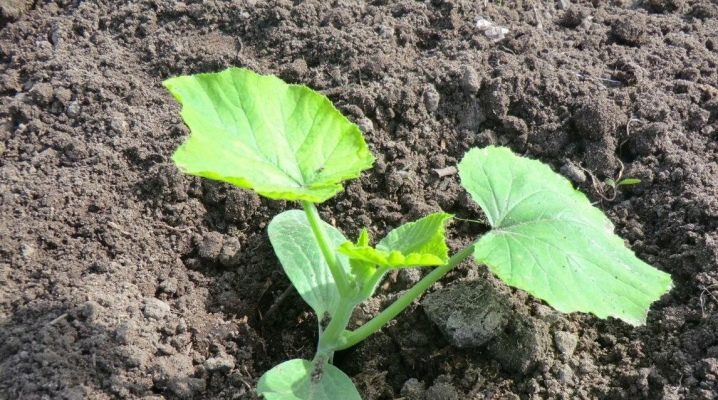
Most gardeners prefer to plant pumpkin seeds directly in open ground. But in regions with short and cool summers, they are pre-grown in containers or pots. Such preparation helps to get an early harvest without any problems.
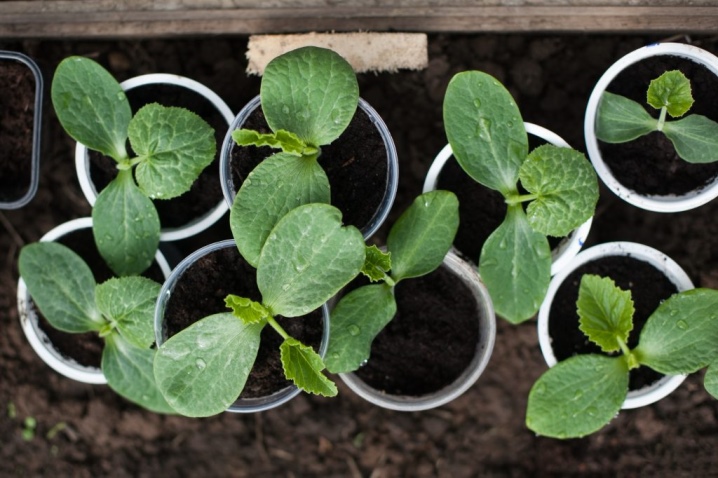
Landing dates
It is necessary to plant pumpkin for seedlings at the right time. When choosing the moment for landing, you should focus on the following nuances.
Climate features
The disembarkation time depends on the region in which this procedure is carried out. So, in the Moscow region and the middle lane, seeds for seedlings are sown in the second half of April, in Siberia and in the Urals - in May. In the southern regions, this is already being done at the end of March.
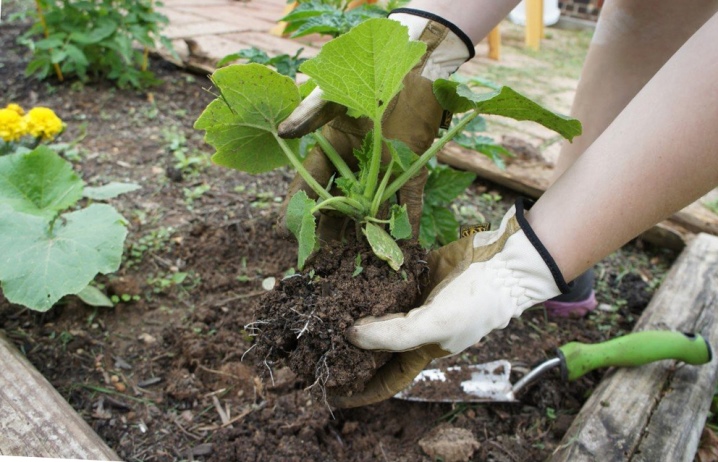
Features of the variety
The choice of the optimal time for planting a pumpkin is also influenced by its varietal characteristics. When looking for a suitable plant, you should pay attention to the following varieties.
- Early... Such varieties as "Healing" or "Volzhskaya gray" are popular among gardeners. You can plant seeds in March or at the very beginning of April. They usually ripen within 80-90 days. When choosing such plants, it is worth remembering that early pumpkins are stored for a very short time.
- Late... Late-ripening pumpkins have a much longer shelf life. They usually ripen in the middle of autumn. Gardeners like such varieties as "Premiere" or "Gribovskaya winter". A big plus of these plants is that they are resistant to drought and cold.
- Bush... These varieties are suitable for planting in small areas. Experienced gardeners like the "Country" pumpkin. Its fruits are oval in shape and have a pleasant juicy pulp. Immediately after such a pumpkin turns yellow, it can be plucked and used for cooking various dishes.
- Sweet... It is very easy to grow "Almond" or "Butternut" pumpkin from a seed. But such varieties ripen for 3-4 months. Due to the fact that the process of fruit ripening takes a really long time, such pumpkins are almost always grown before planting in open ground.
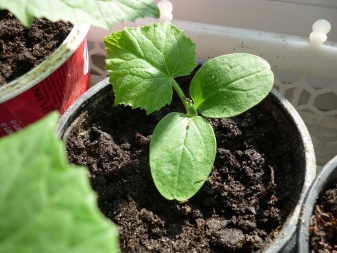
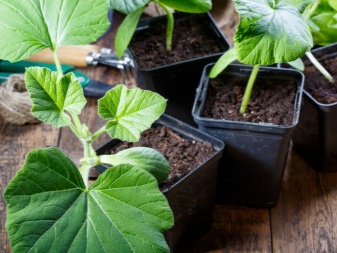
If the gardener plans to plant several varieties of pumpkins on his site, you need to grow seedlings separately. Only in this case, young sprouts can be given everything they need.
Moon phase
Some gardeners, choosing suitable days for planting seeds, are guided by the lunar calendar. It is believed that they should not be planted in the soil during full moon or new moon periods. It is best to do this on the waxing moon. In this case, the plants will grow quickly and bear fruit well.
As a rule, the pumpkin is planted at home 30 days before transplanting it into the open ground. During this time, the seedlings have time to grow up and get stronger enough. Therefore, they manage to quickly adapt to new conditions.
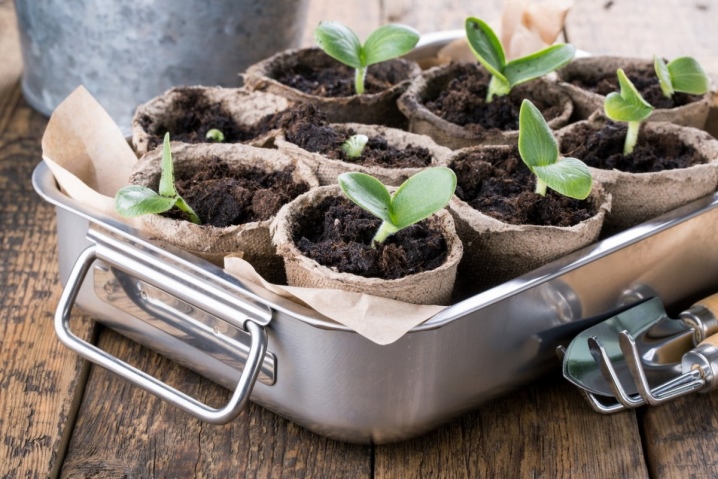
Choice of capacity
It is recommended to plant pumpkin seeds in individual containers. These can be small pots or disposable cups. It is important that there are drainage holes at the bottom. The volume of containers in which pumpkin seeds are planted should be within 0.5 liters.
Popular among gardeners are special peat cups... It is very convenient to grow pumpkin in such containers. By choosing such a cup, you don't have to worry about preparing the drainage.
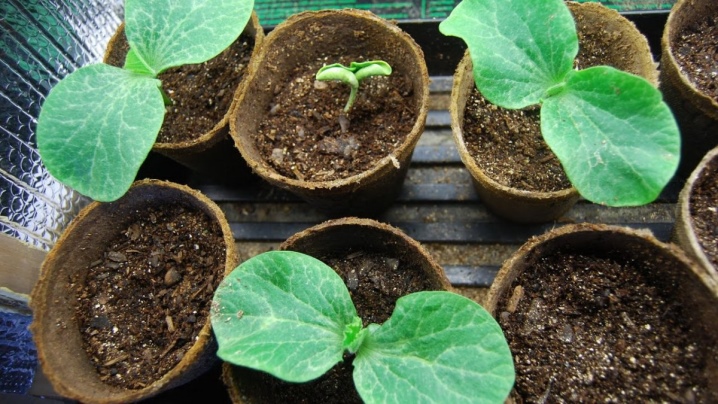
If it is not possible to place the pumpkin in separate pots, the seedlings are grown in a large container divided into compartments with paper or plastic dividers. In this case, the distance between the seeds should be at least 7-12 centimeters.
Soil preparation
You need to grow pumpkin in nutritious soil. For beginner gardeners, it is best to buy a special mixture suitable for growing pumpkin seeds. In such soil, not only pumpkins grow well, but also zucchini with cucumbers.
You can easily make a nutritious mixture for young seedlings with your own hands. Its preparation will not take long. To do this, humus is mixed with sand and peat in a 1: 1: 2 ratio. In some cases, the sand is replaced with rotted sawdust. Self-compiled soil must be disinfected. To do this, it is steamed in the microwave, turned on at full power, for several minutes. Instead, the soil can also be spilled well with boiling water.
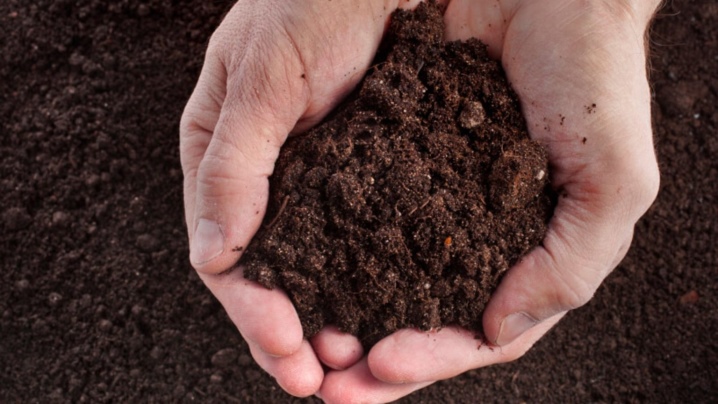
The finished mixture is placed in cups. After that, the prepared containers are left in a warm place. In a couple of days, the soil has time to settle a little. When this happens, you can move on to the next stage.
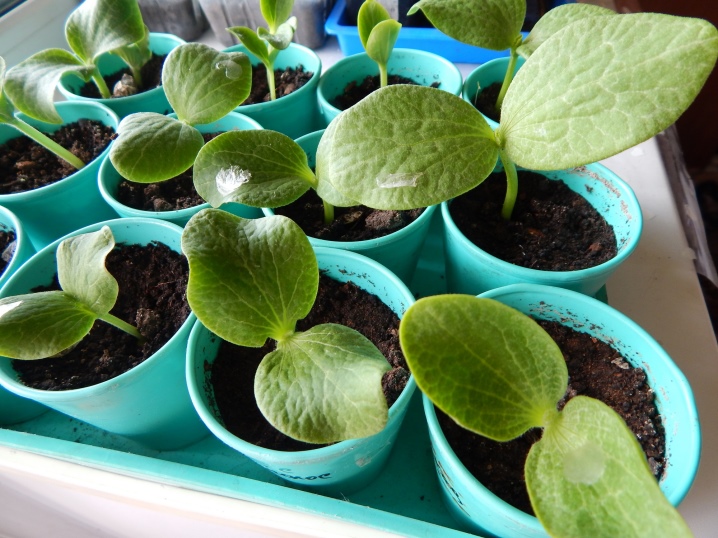
How to choose and prepare seeds?
Seed preparation also plays an important role in growing green pumpkin seedlings. This complex of procedures helps to increase the yield of plants and speed up the process of emergence of the first shoots. It consists of several main stages.
- Calibration... First you need to carefully examine all the seeds. Damaged or dark-stained specimens should be discarded. It is not necessary to use seeds of irregular shape for planting. Leave only the highest quality grains of the same size.
- Check the quality of the planting material. Next, it is important to ensure that the remaining seeds are viable. To do this, dilute a teaspoon of salt in a glass of warm water. The seeds are sent to this container for 2-3 hours. After the required time has elapsed, all specimens that have surfaced should be thrown away, and the rest should be rinsed under running water. It is worth checking in this way both purchased seeds and those that were collected at home.
- Growth stimulant treatment... To quickly awaken the seeds, they can be soaked in any solution that promotes growth acceleration. Some gardeners simply place the grains in a gauze or cloth bag and then submerge them in water and leave them in a warm place for a couple of hours.
- Disinfection... Having finished germinating the seeds, they need to be treated with "Fitosporin" or any other similar means. After this treatment, the seeds are washed again under running water, and then laid out on a newspaper to dry.
- Hardening... The hardening procedure will help to strengthen the immunity of plants, as well as make them more resistant to various diseases and sudden changes in temperature. The seeds are wrapped in a damp cloth, and then placed in the refrigerator for a day. After that, they are sent to a warm place, where they lie for several more hours. Then this procedure is repeated several more times.
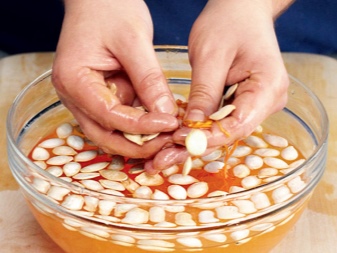

After this time, the seeds will be ready for planting.
How to sow planting material?
Having prepared the seeds and the soil for them, you can start planting plants... The depth of the pits for the grains should be within 5-7 centimeters. After planting the prepared seeds, these furrows are sprinkled with a small amount of soil, and then sprayed with warm water using a spray bottle.
After sowing, the containers are covered with glass or transparent film. This helps to speed up the seedling process. Next, containers with seedlings are placed on the windowsill. Young shoots usually emerge within a couple of days after planting. When this happens, the glass should be removed.

Follow-up care
To get a good harvest, the seedlings need to be properly cared for.
Temperature regime
When growing pumpkin, choosing the right temperature is important. Young shoots develop best at temperatures ranging from 22 to 25 degrees. When the seedlings are older, they can be stored in a colder room. This will allow young plants to quickly adapt to new conditions.
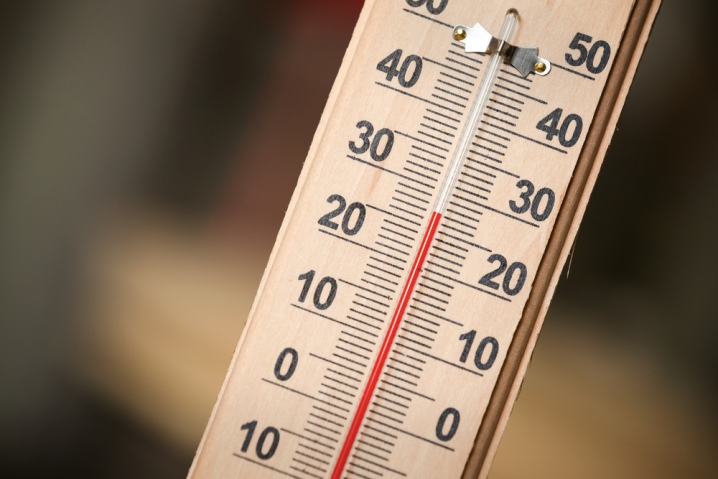
Lighting
Home-grown pumpkin seedlings need a lot of light. Green shoots should be exposed to light for half a day. Therefore, containers with seedlings are best placed on the southern windowsill. If the seedlings grow in the dark, they will stretch out strongly, but they will remain weak.
In order not to harm the plants, it is recommended to shade the seedlings at noon, protecting them from direct sunlight. You can use unnecessary newspapers for this.

Watering
Since pumpkin is a moisture-loving plant, it needs to be watered regularly. The soil should be well moistened. In this case, the plants should not be transfused. This will lead to root rot. For watering young seedlings, it is recommended to use clean, settled water. It is advisable to keep it warm.
Water the seedlings in small portions. It is recommended to increase the volume of water used daily. Watering young bushes is necessary at the root, making sure so that moisture does not collect on the foliage... This can lead to burns on it.
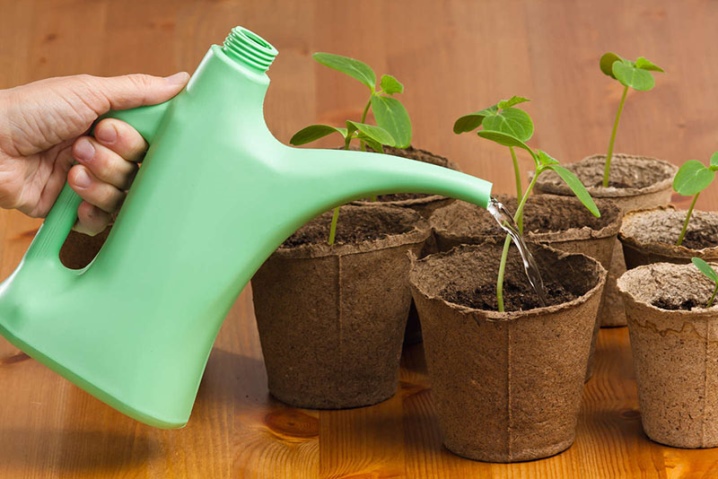
Top dressing
Timely feeding will also be useful for seedlings. For the first time, fertilizers are applied to the soil approximately 10-12 days after the appearance of the first shoots.... For a start, the seedlings are well watered. After that, the soil in the pots is gently loosened. To do this, you can use a wooden spatula or a regular toothpick.
An hour after this procedure, when the moisture is absorbed, it is time to apply special complex fertilizers. You can buy them at any gardening store. Before use, the product is diluted in a small amount of warm water. It is not recommended to add dry dressing to the soil.
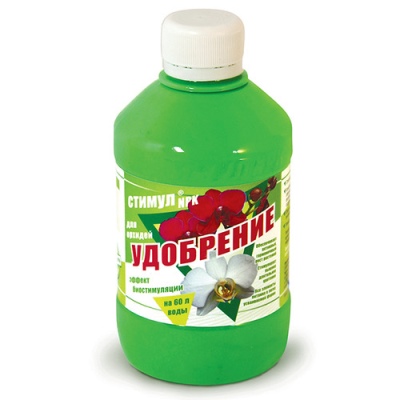
Instead, gardeners also use organic fertilizers such as mullein solution. The use of such feeding has a good effect on the condition of the plants. But if you feed seedlings in this way, which are grown in an apartment or house, an unpleasant smell will emanate from the containers with soil for a long time. That's why in this case, it is still better to replace organic fertilizer with mineral fertilizer.
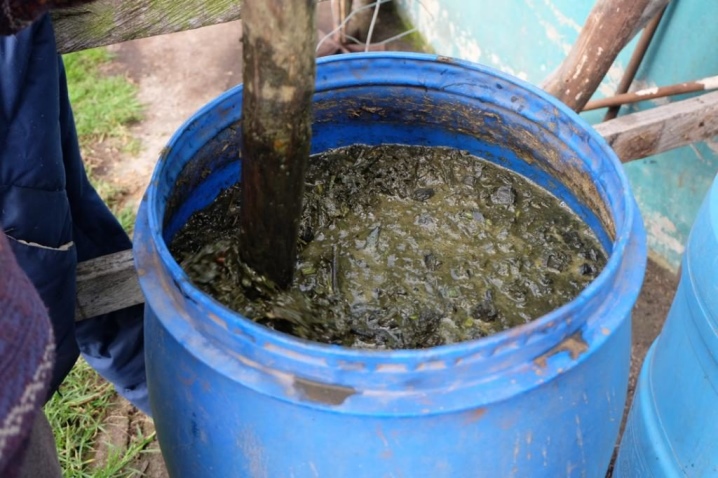
If nutrient soil was used for planting seeds, the plants need not be fed until they are transplanted into open ground. They will develop very well without it.
Hardening
About five days before moving to open ground, the seedlings must be hardened.... To do this, containers with plants are taken out into the street or left on an open balcony. The session time is gradually increasing. On the last day, plants can be left outdoors all day.
It is worth remembering that plants, even at this time, should not be under the rays of the scorching sun. This will greatly harm the young seedlings.
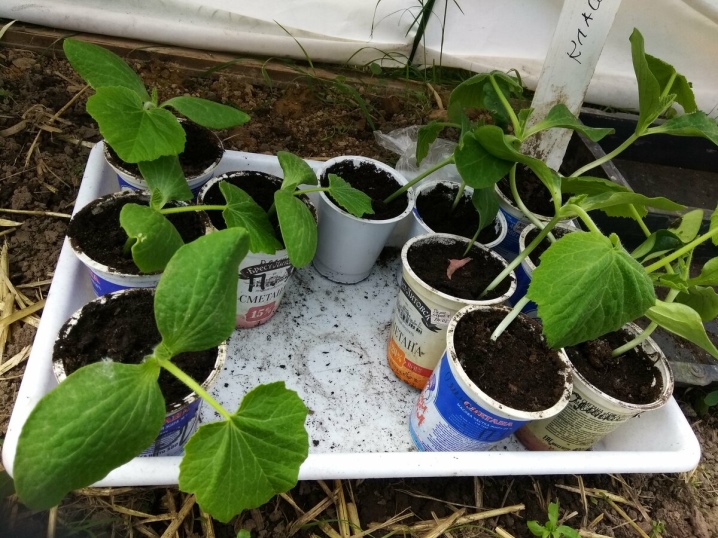
If the seedlings are grown in a greenhouse, they should also be hardened. To do this, the room is simply ventilated for several minutes a day. It is recommended to do this on warm days.
Possible problems
In the process of growing pumpkin seedlings, gardeners often face various problems. Knowing about them, it will be much easier to save your future harvest.
- Some gardeners leave glass on containers with seedlings even after the first shoots appear in them. This leads to burns on the foliage. To prevent this from happening, you need to carefully monitor the containers with seedlings and do not miss the right moment.
- Trying to improve the condition of the seedlings, gardeners may water it too abundantly. This can lead to the development of a disease called black leg. The diseased plant weakens. Its root collar becomes dark. The plants soon die. It is impossible to fight this disease, therefore it is important to prevent infection of seedlings. To do this, the crop does not need to be watered too often.The soil mixed at home must be disinfected before planting seeds. The containers in which the seedlings are placed should also be treated with a weak solution of potassium permanganate.
- In some cases, seedlings growing in unsuitable conditions are pulled out... This leads to the fact that it becomes weak and worse adapts to new conditions. If the seedlings are stretched out, the temperature in the room should be lowered, and the young plants themselves should be slightly shaded. Some gardeners, faced with this problem, are engaged in picking plants. This must be done very carefully, trying not to damage the delicate roots of young seedlings. In all other cases, you should not dive the plants.
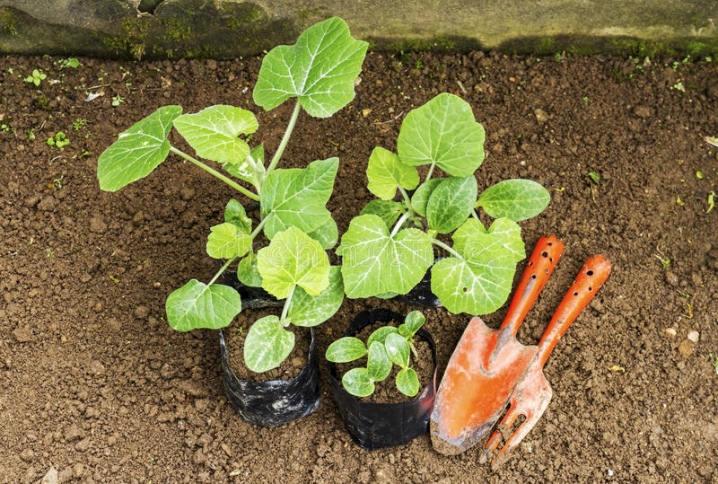
In general, pumpkin seedlings are quite strong and resilient. That's why problems with its cultivation are very rare.
Transplant to open ground
It is worth planting young seedlings in the beds after it grows up a little. This usually happens one month after sowing the seeds. At this time, several full-fledged green leaves should appear on it.


It is necessary to replant young seedlings only after the soil on the site warms up well. The pumpkin beds are prepared as follows.
- First, the site needs to be cleaned of plant debris and well dug up... If fertilizers were not applied to the soil in the fall, this will need to be done in the spring. It is best to use humus to feed the soil. Some gardeners prefer to add it directly to the holes before planting seedlings. In some cases, humus is mixed with wood ash. Such feeding not only stimulates the growth of young bushes, but also protects them from common diseases.
- The dug area must be well watered with warm water.... In this form, it must be left for a couple of days.
- Some time after carrying out these procedures, it is worth installing several supports for weaving on the site. It is best to use wooden pegs for this. That part of the support, which is buried in the ground, must be treated with special protective equipment. This is done in order to protect it from decay.
- Immediately before planting seedlings in the garden, you need to dig several holes. They shouldn't be too deep. The optimum depth of the pits is 10-12 centimeters. The distance between them should be within 50 centimeters. If it is less, the plants will develop poorly and bear fruit due to lack of nutrients.
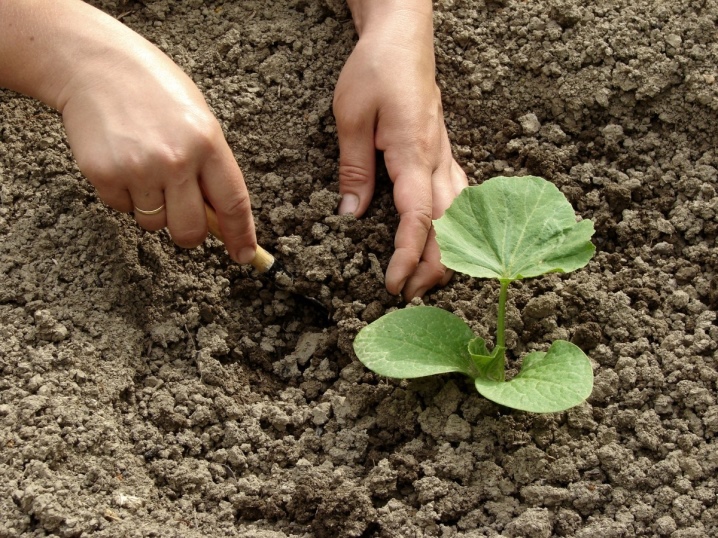
Plants should be planted in the prepared holes in the early morning or evening. Saplings from the cups are taken out together with an earthen clod. After planting the plant in the ground, it is covered with a small amount of fertile soil. At the same time, it is not worthwhile to tamp the earth strongly. After that, each seedling is watered with warm water.
If seedlings are planted in a cold region, young seedlings should be covered with cut bottles at night. Such shelters are removed early in the morning. If this is not done, the plant can also dry out and get burned. In the future, the culture is regularly watered, and the soil next to the stems is loosened so that it does not become covered with a dense crust.
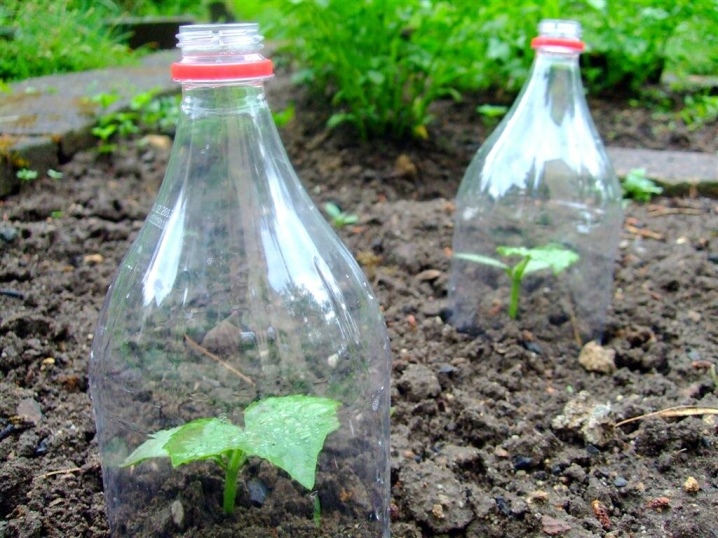
Correctly prepared seedlings will quickly take root in a new area. Therefore, it will be much easier to care for the grown plants.













The comment was sent successfully.